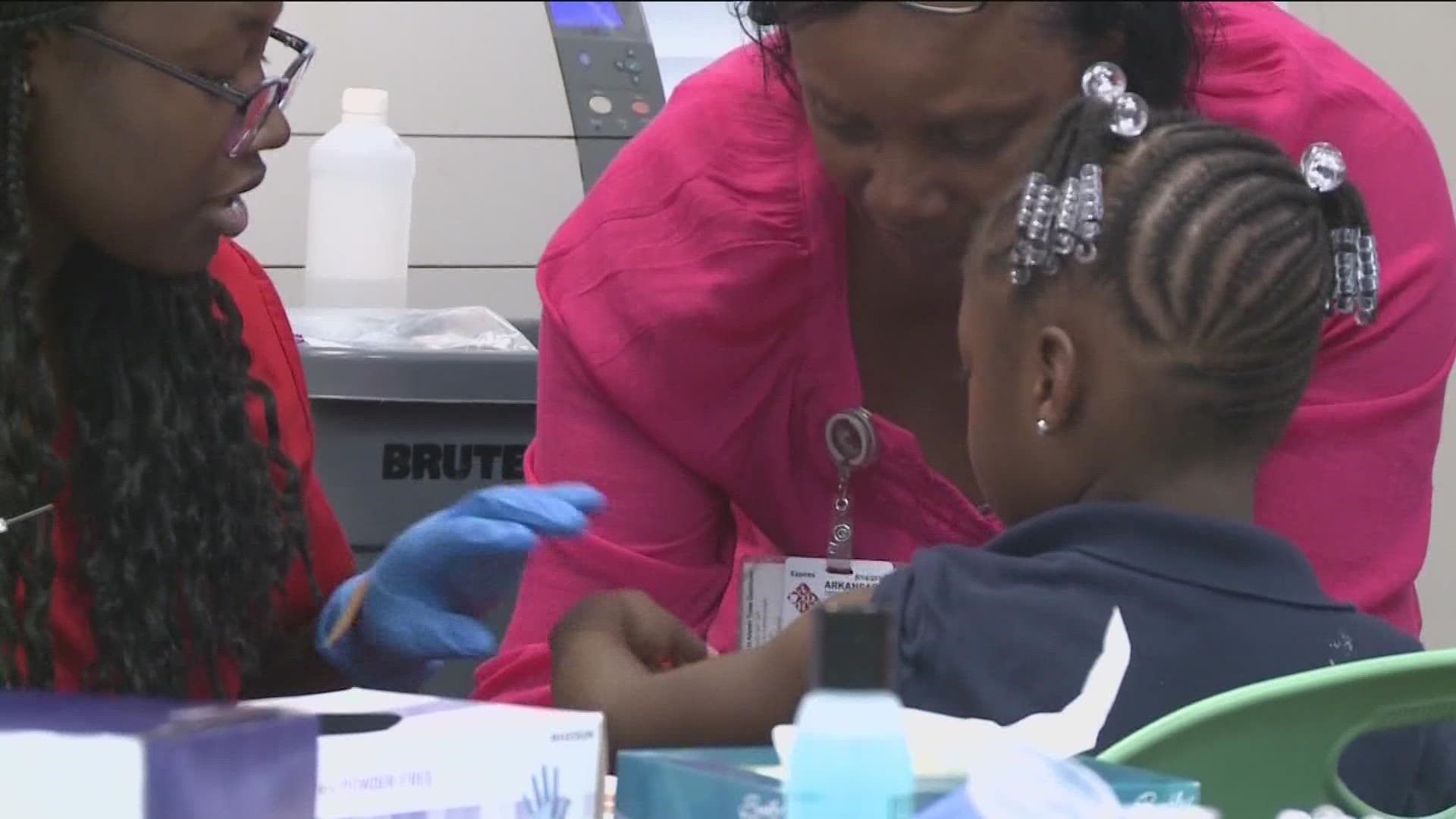TOLEDO, Ohio — New research from the Centers for Disease Control and Prevention shows the number of kindergartners who received their state-required vaccines dropped by 2% in the past two years.
With Thursday's announcement by the CDC, over 80 measles cases reported in central Ohio and a polio case recently detected in New York, WTOL 11 spoke with Dr. Obeto, a general pediatrician at Nationwide Children’s Hospital - Toledo’s Navarre Primary Care Center, about what she has noticed at the local level.
"In the last year or two, I've noticed that some patients don't want to get vaccinations," Obeto said. "Some want to wait. Some do a delayed schedule where they don't do all the shots at the same time, but they spread it out."
She warned that diseases like measles, mumps and polio could become more prevalent if children don't receive their routine vaccinations. In addition to the decline, the CDC reported 250,000 kindergarteners are potentially not protected against measles.
"The reason the child is not exposed to it (measles) now is because other people got vaccinated before, so we were able to eradicate the disease," Obeto said. "But the less people get vaccinated, the more likely it is for it to come back."
Dr. Kimberly Giuliano of the Cleveland Clinic said the reason why some parents may be choosing not to vaccinate their children stems from concern over the COVID-19 vaccine. But, Giuliano said the benefits outweigh the concern.
"We see common side effects like fever and irritability and those go away, but the impacts of some of these diseases don't go away," Giuliano said.
Health leaders with the CDC note, however, some go unvaccinated due to availability barriers, such as minorities and individuals with less access to coverage. Those accessibility issues have caused vaccine rates to decrease, too.
Obeto said getting these vaccines and making them accessible is not the only priority. Getting them earlier is just as important because if you attend school and have been exposed, the chances for others to get infected increase exponentially.
"If you go to school and you've been exposed to one of these infectious diseases, the chances you carry to school are pretty high," she said.
If you miss a scheduled dose of any vaccine, Obeto said a dose is better than no dose.
"'Half a loaf is better than none.' So even if you get it (vaccine) later, it's better than not having it at all," Obeto said.
She also said to contact your main healthcare provider or pediatrician if you have questions about vaccines.
The CDC's schedule on when to receive vaccines from birth-18 years and more information is located here.

